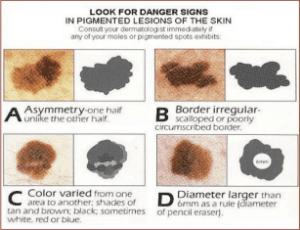What is this Bump?
Every day someone comes into the office concerned about a bump on their foot. It may or may not be painful. It could be small enough to be on one of the toes or quite large on the top or bottom of the foot. It could be perfectly round or an irregular shape. It could be a normal color or darker. It could have been present for a week or a year. It could be soft or hard. Don’t ignore that bump! Most bumps whether soft or hard aren’t serious. However, occasionally a bump can be cancerous. Some of the more common bumps on the foot are:
Bone spurs (calcium build up),
Ganglion cyst (thick gel-like fluid filled),
Warts (a type of virus),
Plantar Fibroma,
Gout,
Squamous cell carcinoma
Some bumps on the foot require immediate attention in the form of removal. This can be done in the office in some cases but often it requires an outpatient procedure. Other bumps can be treated with a Cortisone injection to dissolve them. And, even other bumps can be ignored if they’re not painful. Some bumps need to be addressed quickly because they are constantly irritated by shoes. A bump on the back of the heel is one such bump that shoes can irritate. We will always recommend wearing alternative shoes, however, that doesn’t always eliminate the pain. In some cases we will take a piece of the bump and send it to a pathology lab to be evaluated. Of course, in this situation we are looking for cancer cells. If any are present we will remove the bump immediately. Any bump that is getting larger and more painful requires immediate medical attention. It could start pressing on a nerve, causing an even greater amount of pain. Many people try over-the-counter products for foot conditions. A bump on the foot is not a time for that. And I’m not aware of any products that effectively eliminate bumps. The bottom line is… Don’t ignore that bump! Most bumps are easy to diagnose with an exam, x-ray and ultrasound. They are also easy to treat and can be eliminated quickly when indicated. If you have a bump on your foot, instead of worrying about it, come in and have it checked out. Eliminating the hurt that a bump may cause is one thing but having peace of mind of knowing what it is, is another.
Do you need to treat black toenails?

How can I treat heel fissures at home?
For many, the appearance of cracks on the heels are nothing more than an embarrassment or inconvenience, but for others, heel fissures can cause a great deal of pain. Whether you have deep cracks in your heels or just have dry skin, here are ways to treat heel fissures at home:
Soak your feet in lukewarm water for about 15 to 20 minutes. Then, use a pumice stone to gently remove the dead skin. Gently pat your skin dry, followed by an application of moisturizer, and a thick pair of socks.
We recommend 40% or greater urea creams for fissures. Stop by our office and pick up some Kera 42. After your shower, apply the cream and wrap your feet with saran wrap. Top with a pair socks if you want, and leave the cream on for 20-30 minutes. Remove the saran wrap and your feet will feel and look super soft!
With these easy, at-home cures, your feet will be feeling brand new in no time! If you don’t notice improvement after a week, contact or doctors at Next Step Foot and Ankle Clinic at Call (210) 375-3318 or by visiting us online.
What are the symptoms of skin cancer on my feet?

These letters stand for asymmetry, borders, colors, and diameter. Malignant melanoma usually has an asymmetrical shape; is surrounded by irregular or uneven borders, displays multiple color splotches; or has a diameter greater than six millimeters. If you think you notice cancer on either of your feet, contact our team at Next Step Foot & Ankle Clinic in Universal City or Pleasanton, TX, to take care of it right away. You can reach us for an appointment by calling 210.375.3318 or by using the online request form.
